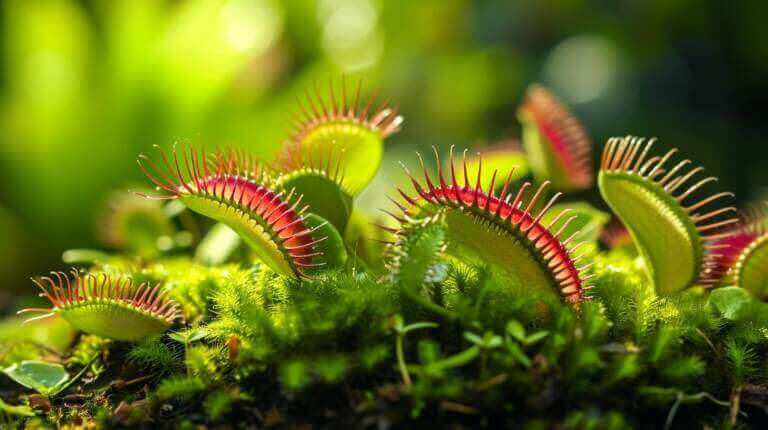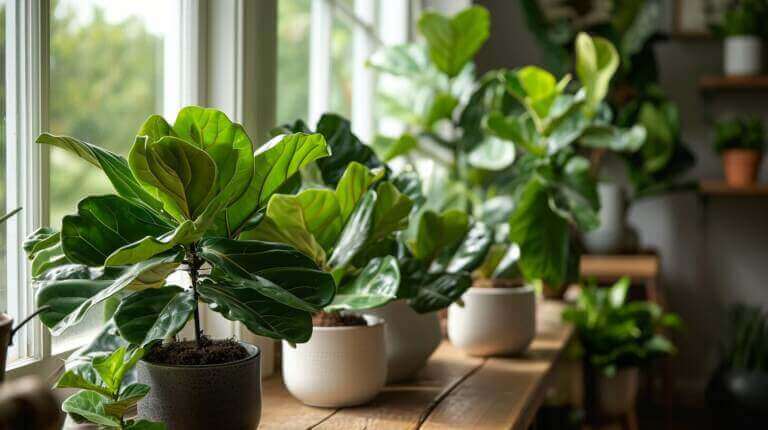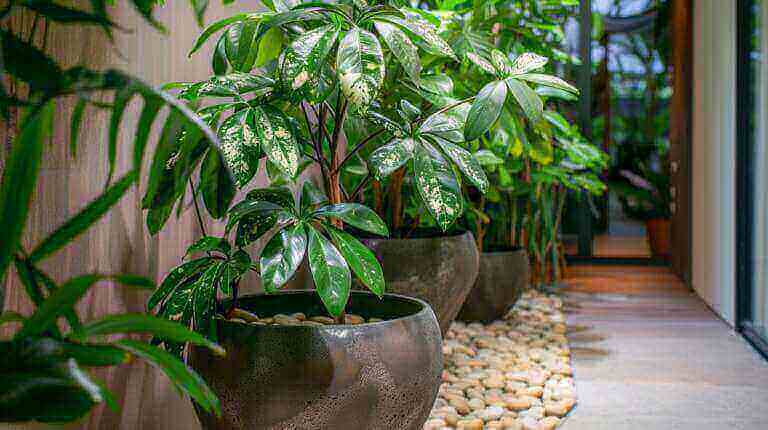How To Propagate Umbrella Plant From Schefflera Plant Cutting or Seeds
Propagating your umbrella tree plant, also known as scheffleras, is a rewarding process that allows you to create new plants from existing ones. Whether you’re looking to expand your plant collection or rejuvenate older plants, propagating your umbrella plant can be a cost-effective and satisfying endeavor.
In this comprehensive guide, I will walk you through the step-by-step process of propagating your umbrella plant, using various methods such as stem cuttings, water propagation, soil propagation, sphagnum moss propagation, and air layering. By following these techniques, you can ensure a successful propagation and the growth of healthy new plants.
Key Takeaways:
- Propagating umbrella plants allows you to create new plants from existing ones.
- It’s a cost-effective way to expand your plant collection.
- Propagating your own plants gives you a sense of satisfaction and accomplishment.
- There are various methods for propagating umbrella plants, including stem cutting propagation, water propagation, soil propagation, sphagnum moss propagation, and air layering.
- Each method has its own advantages and success rates, allowing you to choose the one that works best for you.
Why Propagate Umbrella Plant
Propagating your umbrella plant has several benefits. Firstly, it allows you to expand your plant collection without having to purchase new plants. It’s a cost-effective way to increase your greenery at home. Additionally, propagating your umbrella plant gives you the opportunity to rejuvenate older or struggling plants, ensuring their longevity and health. Moreover, propagating your own plants gives you a sense of satisfaction and accomplishment, as you witness the growth and success of your propagated plants.
Not only does propagating your umbrella plant save you money and breathe new life into existing plants, but it also provides you with a fulfilling gardening experience. By witnessing the growth and development of your propagated plants, you can take pride in your green thumb and the success of your efforts. Propagation is a rewarding process that allows you to explore new techniques, experiment with different methods, and further deepen your passion for gardening and plant care.
Whether you’re a seasoned gardener looking to expand your collection or a beginner eager to try your hand at propagation, choosing to propagate your umbrella plant offers a multitude of advantages. From saving money to ensuring the health and longevity of your plants, propagating allows you to nurture and care for new growth while enjoying the satisfaction of a thriving plant collection.
| Benefits of Propagating Umbrella Plant |
|---|
| Cost-effective way to increase plant collection |
| Rejuvenates older or struggling plants |
| Satisfaction and accomplishment of witnessing growth |
Propagation Methods for Schefflera Plants
When it comes to propagating your umbrella plant, there are several methods you can choose from. Each method offers its own advantages and success rates, allowing you to select the one that best suits your preferences and plant’s needs. Let’s explore the different propagation methods for umbrella plants:
Stem Cutting Propagation
Stem cutting propagation is a popular and effective technique for propagating umbrella plants. To begin this method, you will need clean and sharp pruners to take 4-6 inch cuttings from a healthy plant. Remove the leaves from the bottom half of the cutting and dip the cut end in rooting hormone to stimulate root growth. Plant the cutting in a pot filled with a well-draining mixture of peat and perlite, ensuring the soil remains damp but not waterlogged. Cover the pot with a clear plastic bag to create a humid environment and mist inside the bag every few days. After 4-6 weeks, check for root growth by gently tugging on the cutting. If there is resistance, it indicates that roots have developed, and you can remove the plastic bag and care for the plant as you would with a mature plant.
Water Propagation
Water propagation is a simple and popular method for propagating umbrella plants. To propagate your plant using water, take stem cuttings and place them in a glass of clean water, ensuring that the cut ends are submerged. Change the water regularly to provide oxygen and prevent the growth of bacteria. Place the glass in a bright, indirect light location, and wait for roots to develop. Once the roots have established themselves, you can transfer the cuttings to pots filled with well-draining soil and continue caring for them as mature plants.
Soil Propagation
If you prefer a more traditional approach, soil propagation is a reliable method for propagating umbrella plants. To propagate your plant in soil, take stem cuttings and dip the cut ends in rooting hormone. Insert the cuttings into pots filled with moist soil, and provide warmth and humidity to encourage root growth. You can use a heating mat or cover the pots with clear plastic bags to create a greenhouse effect. Keep the soil moist but not waterlogged, and monitor the cuttings for signs of new growth. Once roots have developed and new leaves have formed, you can transplant the cuttings into individual pots and care for them as mature plants.
By using these three primary propagation methods – stem cutting propagation, water propagation, and soil propagation – you can successfully reproduce and expand your umbrella plant collection. Experiment with different techniques to find the method that yields the best results for you and enjoy the satisfaction of growing new plants from existing ones.
Step-by-Step Guide to Stem Cutting Propagation
Stem cutting propagation is a popular and effective method for propagating umbrella plants. With just a few simple steps, you can easily create new plants from cuttings and expand your greenery at home. Here is a comprehensive guide on how to propagate your umbrella plant from stem cuttings:
- Start by selecting a healthy umbrella plant as the mother plant. Use clean and sharp pruners to take 4-6 inch cuttings from the plant.
- Remove the leaves from the bottom half of the cutting, leaving only a few leaves at the top.
- Dip the cut end of the stem cutting into rooting hormone. This will help promote root development.
- Prepare a pot filled with a well-draining mix of peat and perlite.
- Plant the cutting in the pot, making sure that the cut end is inserted about an inch deep into the soil.
- Water the soil thoroughly, until it is evenly moist but not waterlogged.
- Cover the pot with a clear plastic bag to create a humid environment. This will help retain moisture and promote root growth. Make sure to secure the bag with a rubber band or tie to keep it in place.
- Place the pot in a warm and bright location, but away from direct sunlight. Ideal temperatures for root development range from 70-75°F (21-24°C).
- Mist the inside of the bag every few days to maintain humidity. This will help prevent the cutting from drying out.
- After 4-6 weeks, check for root growth by gently tugging on the cutting. If there is resistance, it means roots have developed.
- At this point, you can remove the plastic bag and continue caring for the plant as you would a mature umbrella plant. Keep in mind that it may take some time for the new plant to establish itself and grow.
Water Propagation: A Simple Method for Umbrella Plant Propagation
Water propagation is a straightforward and effective method for propagating umbrella plants. By following a few simple steps, you can successfully propagate your plant and watch as new roots develop.
To begin the water propagation process, start by taking stem cuttings from a healthy umbrella plant. Use clean and sharp pruners to ensure a clean cut. Cuttings should be around 4-6 inches in length.
Next, place the stem cuttings in a glass of clean water, ensuring that the cut ends are fully submerged. It’s important to change the water regularly to provide oxygen to the developing roots and prevent the growth of bacteria. Place the glass in a bright location with indirect sunlight, as direct sunlight can be too intense for the cuttings.
After a few weeks, you’ll start to see roots forming from the cut ends of the stem cuttings. Once the roots are well-established, you can transfer the cuttings to pots filled with a well-draining soil mix. Make sure to keep the newly potted cuttings in a warm and humid environment, as they continue to acclimate to their new soil.
Water propagation is a simple and accessible method that allows you to propagate your umbrella plant with ease. It’s a great way to expand your plant collection and enjoy the satisfaction of growing new plants from cuttings.
Soil Propagation: A Reliable Method for Umbrella Plant Cuttings Propagation
Soil propagation is a tried-and-true method for propagating umbrella plants that offers reliable results. It involves taking stem cuttings and encouraging root growth in a soil medium. This method is particularly suitable for gardeners who prefer a more traditional approach to plant propagation.
To propagate your umbrella plant in soil, start by taking 4-6 inch stem cuttings from a healthy plant. Dip the cut ends in rooting hormone to enhance root development. Next, insert the cuttings into pots filled with moist soil, making sure to provide adequate warmth and humidity for optimal growth.
A heating mat can be used to maintain a consistent temperature, or you can cover the pots with clear plastic bags to create a greenhouse-like environment. Regularly monitor the soil moisture, ensuring it remains damp but not waterlogged.
Over time, you’ll start to notice new growth from the cuttings, including the emergence of roots and the development of new leaves. Once the roots are well-established and the new plant is thriving, you can transplant the cuttings into individual pots and continue caring for them as mature umbrella plants.
Table: Soil Propagation Steps
| Step | Description |
|---|---|
| 1 | Take 4-6 inch stem cuttings from a healthy umbrella plant. |
| 2 | Dip the cut ends in rooting hormone for enhanced root development. |
| 3 | Insert the cuttings into pots filled with moist soil. |
| 4 | Provide warmth and humidity for optimal growth using a heating mat or clear plastic bags. |
| 5 | Monitor soil moisture and keep it damp but not waterlogged. |
| 6 | Observe new growth, including root development and the emergence of new leaves. |
| 7 | Transplant the rooted cuttings into individual pots and continue caring for them as mature plants. |
Other Propagation Methods: Sphagnum Moss and Air Layering
Aside from stem cutting propagation, water propagation, and soil propagation, there are two additional techniques you can explore for propagating your umbrella plant: sphagnum moss propagation and air layering.
Sphagnum moss propagation involves wrapping the cuttings in moist sphagnum moss, creating a conducive environment for root growth. This method requires patience and care, as the moss needs to be kept consistently moist and the cuttings monitored for signs of root development. Although it may require more time and effort, sphagnum moss propagation can be a rewarding alternative for expanding your umbrella plant collection.
Another method to consider is air layering. This technique allows for root development while the stem is still attached to the mother plant. To air layer your umbrella plant, make a small incision on the stem and apply rooting hormone. Next, wrap the wounded area with moist sphagnum moss or peat moss, securing it with plastic wrap or aluminum foil. Over time, roots will grow from the wounded area into the moss. Once the roots have developed, you can cut the rooted section from the mother plant and transplant it into its own pot.
By exploring sphagnum moss propagation and air layering, you have the opportunity to experiment with additional propagation techniques and expand your skills as a plant propagator. These methods may require more time and effort, but they can yield successful results and provide an alternative approach to propagating your umbrella plant.
FAQ
What is umbrella plant propagation?
Umbrella plant propagation is the process of creating new plants from existing umbrella plants. It involves taking cuttings or using other propagation methods to encourage root growth and create new, healthy plants.
Why should I propagate my umbrella plant?
Propagating your umbrella plant has several benefits. It allows you to expand your plant collection without purchasing new plants, saving you money. It also rejuvenates older or struggling plants, ensuring their longevity and health. Additionally, propagating your own plants provides a sense of satisfaction and accomplishment.
What are the different methods of umbrella plant propagation?
There are several methods you can use to propagate your umbrella plant, including stem cutting propagation, water propagation, soil propagation, sphagnum moss propagation, and air layering.
How do I propagate my umbrella plant using stem cuttings?
To propagate your umbrella plant using stem cuttings, you will need to take 4-6 inch cuttings from a healthy plant. Remove the leaves from the bottom half of the cutting and dip the cut end in rooting hormone. Plant the cutting in a pot filled with a well-draining mix of peat and perlite, and keep the soil damp but not waterlogged. Place a clear plastic bag over the pot to create a humid environment and mist inside the bag every few days. After 4-6 weeks, check for root growth by gently tugging on the cutting. If there is resistance, it means roots have developed, and you can remove the plastic bag and care for the plant as you would a mature plant.
How do I propagate my umbrella plant using water?
To propagate your umbrella plant in water, take stem cuttings and place them in a glass of clean water, ensuring that the cut ends are submerged. Change the water regularly to provide oxygen and prevent the growth of bacteria. Place the glass in a bright, indirect light location, and wait for roots to develop. Once the roots are well-established, you can transfer the cuttings to pots filled with well-draining soil and continue caring for them as mature plants.
How do I propagate my umbrella plant using soil?
To propagate your umbrella plant in soil, take stem cuttings and dip the cut ends in rooting hormone. Insert the cuttings into pots filled with moist soil and provide warmth and humidity to encourage root growth. You can use a heating mat or cover the pots with clear plastic bags for added humidity. Keep the soil moist but not waterlogged, and monitor the cuttings for signs of new growth. Once roots have developed and new leaves have formed, you can transplant the cuttings into individual pots and care for them as mature plants.
Are there other methods of umbrella plant propagation?
Yes, there are alternative methods of propagating your umbrella plant, such as sphagnum moss propagation and air layering. Sphagnum moss propagation involves wrapping the cuttings in moist sphagnum moss to encourage root growth. Air layering allows for root development while the stem is still attached to the mother plant.







